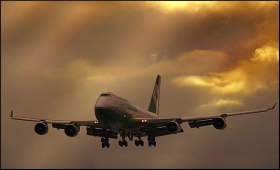|

|
Centre proposes fixed-yield model to attract global airport operators
|
|

|
|
| Top Stories |
 |
|
|
|
SME Times News Bureau | 15 Aug, 2018
In a bid to attract global airport operators, the government on Tuesday
proposed shifting from the revenue-sharing to the fixed aeronautical
yield model based on the number of passenger footfalls at greenfield
airports.
"The present model is revenue-sharing... the new model
will be based on (the number of) passengers entering the airport. This
will be the most transparent method. With new technology, the headcount
is far more easier," Civil Aviation Minister Suresh Prabhu said.
In
the new model, the airport operator will be allowed to earn Rs 400 per
passenger per year for aeronautical services like landing and parking
charges from airlines and also pay a minimum of Rs 20 and an additional
concession fee per passenger per year to the concession guarantor. The
additional concession fee is the bid parameter.
Sharing a draft
of the new Model Concession Agreement (MCA) for greenfield airports
that will remain open for public consultations till September 14, Prabhu
said that it aims to make the system transparent and predictable by
removing uncertainties relating to regulatory practice and revenue
determination.
"We want the model to be extremely transparent and
something which will not be subject to any controversy... the new
regime will mean that the successful dealer will have to provide
facilities that will be pre-determined in terms of quality," he added.
The
concession period is 40 years and its scope is to develop, build,
operate, maintain and transfer at the end of this period. There will be a
moratorium on the concession fee for the first three years.
Both
Rs 400 Maximum Blended Aeronautical Yield (MBAY) for 2018-19 and the
concession fee per passenger will be indexed to 50 per cent inflation
whereas the balance 50 per cent will have to be recovered through
efficiency improvements.
Every five years, a new base rate of MBAY will be proposed and approved for the coming five years.
To
prevent the bid process from failing, the government has also allowed a
provision for 'Negative Concession Fee' where the proposed MBAY may not
be adequate.
"Our goal is to bring in private sector investments
so that we meet the goals of NABH (NextGen Airports for Bharat) Nirmaan
initiative, which is accommodating a billion trips per year," Union
Minister of State for Civil Aviation Jayant Sinha said.
For this,
the country needs to expand its airport capacity four to five times in
10 to 15 years for which, as per the experts, it will need investment of
Rs 3 lakh crore to Rs 4 lakh crore, mainly in greenfield airports,
Sinha said.
The Minister said that the new model will make air
travel as affordable as possible and the entire system transparent and
predictable for all stakeholders.
The other aim is to increase
the consumer choice related to non-aeronautical services like retail,
food and beverage, entertainment and other facilities at the airport.
"We are separating the aeronautical from the non-aeronautical revenues," Sinha said.
The
immediate candidate for the Model Concession Agreement will be Jewar
airport, which is going to be the second airport for Delhi. Jewar will
be the first test case for MCA.
"We are not determining the
amount of capital expenditure the airport operator will bring in as we
are not determining tariff on a cost plus basis... our main focus now
will be on ensuring top-class service," Civil Aviation Secretary R.N.
Choubey said.
The new model puts a cap on the aeronautical
tariffs to Rs 400 per passenger, which is Rs 40 less than the current
charges at the top five airports of the country, as per the officials.
For the non-aeronautical charges, the consumers can decide whether to
spend or not.
|
|
|
| |
|
|
|
|
|
|
|
|
|
|
|
|
|
|
| |
| Customs Exchange Rates |
| Currency |
Import |
Export |
US Dollar
|
66.20
|
64.50 |
UK Pound
|
87.50
|
84.65 |
Euro
|
78.25
|
75.65 |
| Japanese
Yen |
58.85 |
56.85 |
| As on 13 Aug, 2022 |
|
|
| Daily Poll |
 |
 |
| PM Modi's recent US visit to redefine India-US bilateral relations |
|
|
|
|
|
| Commented Stories |
 |
|
|
|
|
|
| |
|